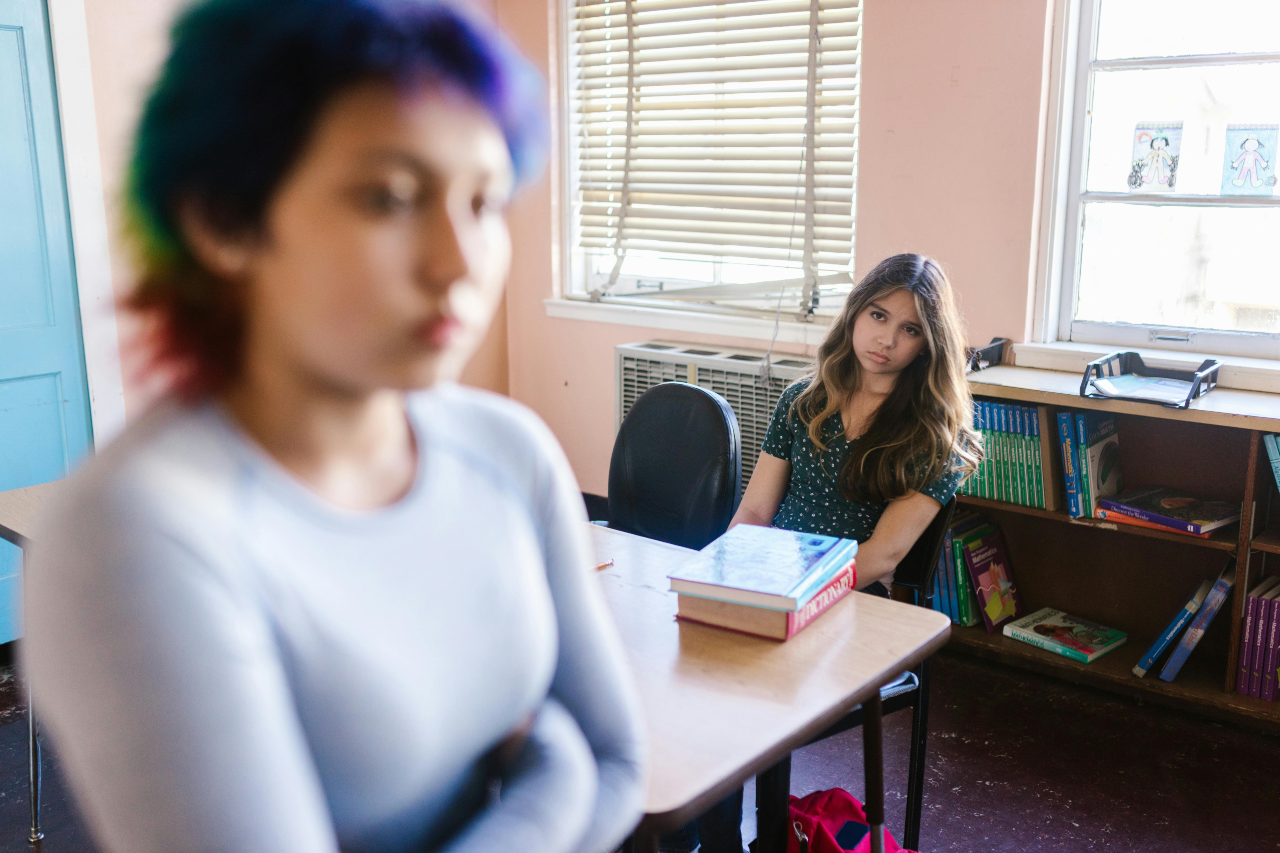A viral and often misunderstood trend can be a catalyst for empathy, skill-building, and inclusive education across generations.
A viral trend called the Gen Z Stare sparks conversation and confusion across all generations. For those unaware, the Gen Z Stare describes the blank, expressionless look many Gen Zers display during face-to-face interactions. Others often misread it as disinterest, and even rudeness.

From mainstream media to TikTok posts, this social phenomenon has become a talking point at workplaces, classrooms and universities, even when you don’t realize you’re discussing it. But Swinburne Sarawak goes beyond the headlines to understand what is truly happening. We respond meaningfully and constructively.
What is the Gen Z Stare?
It is…
- the neutral or unemotional facial expression that Gen Zers (those born ~1997 – 2012) often display during in-person interactions
- a TikTok-popularized term that captures Gen Zers with this expression during social interactions or group settings.
It does not represent coldness, disengagement, or defiance, as older generations often misinterpret it. You can read more about this stare here and here.
Why Does It Happen?
Experts across psychology, communication, and education suggest that the Gen Z stare originates from a mix of developmental, technological, and social-emotional causes.
- Digital communication dominance: Many Gen Zers master digital communication more than face-to-face interaction
- COVID-era development: Experiencing lockdowns during their critical social years created gaps in live communication skills
- Mental and emotional fatigue: It serves as a pause to process or a silent expression of feeling overwhelmed
- Boundary-setting: Some Gen Zers it to reject forced friendliness or protect their emotional space
- Changing values: Gen Z prioritizes authenticity over achievement and emotional well-being over performance.
Read more perspectives here.
What It Means for Higher Education
The Gen Z Stare represents more than just a viral meme. For universities, it is an indicator that we need to rethink how we define engagement, teach communication, and foster mutual understanding with Gen Zers.
Not addressing this will bring up several complications, such as the:
- risk of misinterpretation when faculty and staff misread students as disengaged when they are actually experiencing anxiety or discomfort
- gaps in career readiness, especially when students need help transitioning from digital to face-to-face social skills
- mental health support that the student need because the ‘stare’ may reflect deeper issues such as stress or burnout
- generational misunderstanding and the widening of cultural gaps between Gen Zers and older academics that may create friction.
How Is Swinburne Sarawak Addressing It
Swinburne Sarawak recognizes the Gen Z Stare is not as a problem but rather, an opportunity to lead with empathy and practical actions. The university proactively builds strategies to help students thrive both academically and professionally.
We build awareness, not assumptions. Swinburne delivers staff development and training to help educators and professional teams interpret student behaviours through a modern lens, reducing miscommunication and enhancing support.
We equip students with real-world soft skills. Through our career readiness study programs, our modules are embedded with interpersonal communication skills – skills that prove crucial for interviews, teamwork, and ‘customer’-facing roles.
We center students’ well-being. Swinburne’s counselling services and peer-led programs ensure students access the academic and emotional support they need.
We foster reflective self-awareness. Through in-class engagement, presentations, and one-to-one academic interactions, we encourage students to recognize how nonverbal signals shape how others perceive them.
Swinburne Sarawak Leads with Understanding
Swinburne Sarawak acknowledges generational communication differences as a reality we can work through together. The Gen Z Stare mirrors the world that shaped today’s students. By listening to, supporting, and equipping students, instead of judging them, we prepare them not just for work, but for life.
And we’re proud to be leading the way.
The writer is a mother of three Gen Zers and acknowledges that the Gen Z stare is real, is often complex, occasionally confusing, and at times, unintentionally intimidating.

